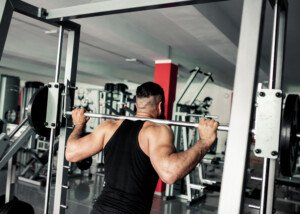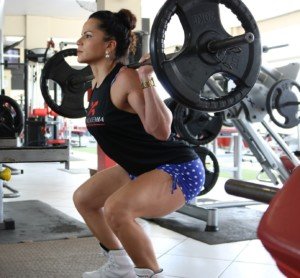
Here are several simple things you can do to help prevent or eliminate shoulder pain from barbell squats.
“Shoulder pain while barbell squatting is a common problem in people with shoulder pathology,” says Joseph Ciccone, DPT, CSCS, a doctor of physical therapy and certified strength and conditioning coach with ColumbiaDoctors in New York, NY.
What causes pain in the shoulders while squatting with a barbell across the upper back?
“Squatting with a flat barbell causes the shoulders to assume an abducted and externally rotated position, which is a high-risk position (not to mention you are applying a large force with a bar and attached weights),” says Ciccone.
Abduction means that the shoulder joints are moved away from the midline of the body.
Those whose shoulders hurt during barbell squats, says Ciccone, will likely have at least one of the following going on:
- Instability in the joint
- Rotator cuff tears or strains
- Labral tears
- Reduced mobility in the thorax and/or glenohumeral joint
- Decreased scapular mobility.
What can you do to prevent pain from barbell squats?
Ciccone says to use a different kind of bar such as a buffalo bar, cambered squat bar or safety squat bar.

Buffalo or bison bar
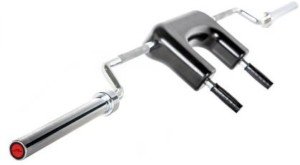
Cambered bar
“These types of bars allow the shoulder to be in a much safer position while still maintaining proper form during the squat exercise.”
The next preventive approach is to perform front squats, that is, holding the barbell at your front.
This isn’t a practical approach if you normally use very heavy weight loads unless you use a Smith machine.
Nevertheless, give it a try, making sure to master this version before piling on the resistance.
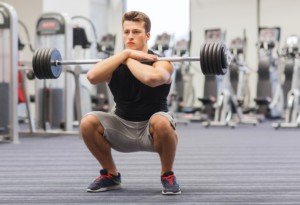
Front squat. Shutterstock/Syda Productions
For those who intend on sticking to light resistance, they can use different implements such as kettlebells, dumbbells and weighted vests.
Another alternative is to do single-leg squats, which can be done with body weight only, or while holding dumbbells. These can also be performed using a Smith machine.
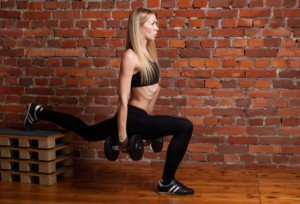
Shutterstock/Artsplav
Shoulder Stretch
Finally, stretching the shoulder prior to barbell squats will go a long way in helping reduce or even prevent pain, depending on what’s going on in the joint in the first place, which may simply be a case of stiffness.
A most useful stretching technique is to position yourself under the bar of a Smith machine or a bar at a squat rack (as you would to prepare for squats behind the neck).
Next, place hands lightly on the bar — but very far apart — and simultaneously externally rotate the shoulders as you maintain your position, leaning forward to get in a good stretch.
Lean forward for reps, meaning, hold this position for 1-2 seconds, then release, 20 times (take your time!), for three sets prior to lifting.




